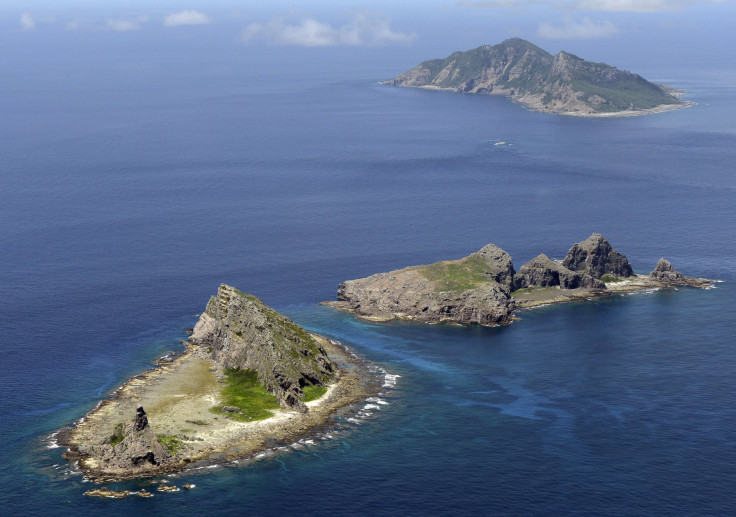East China Sea: US Inserts Itself Into China-Japan Dispute Over Senkaku Islands

The United States has inserted itself into the ongoing territorial dispute between China and Japan over a cluster of East China Sea Islands.
The Commander of U.S. Forces in Japan, Lt. Gen. Kevin Schneider, pledged to help monitor Chinese activity near the disputed Senkaku Islands and defending Japan against any attacks. The U.S. Air Force maintains an air base in the island of Okinawa in the East China Sea.
“The United States is 100% absolutely steadfast in its commitment to help the government of Japan with this situation,” Gen. Schneider said. He said the U.S. takes no official position on the ownership of the islands.
Schneider’s comments, reported by Reuters, drew an immediate response from China’s foreign ministry, which claimed the islands are Chinese territory and calling on all parties to uphold stability in the region.
The Senkaku Islands are under Japanese administration, but China claims it as the Diaoyu Islands.
China is accused of running a campaign of attrition by wearing down Japanese defense forces with frequent flyovers and incursions by fishing vessels. Fears of China lifting a fishing ban near the Senkaku Islands could result in an escalation of already "unprecedented incursions.”
Lt. Colonel Takamichi Shirota, commander of Japan's Air Self Defense Force (JASDF) 204th Tactical Fighter Squadron at Naha Air Base on Okinawa, spoke to CNN recently in an exclusive interview about the increasing pressure that he and the other pilots face. He described how at least twice each day a siren will sound prompting the pilots to scramble and intercept any incursion into the Japanese air space.
Shirota said he has his pilots on alert 24 hours a day, 365 days a year.
"The number of scrambles against airspace violations has been increasing rapidly over the past decade, especially in the southwest air zone,” Shirota said. “About 70% of the scrambles done by Japan's SDF annually are conducted in this area."
Analyst Peter Layton, a former Royal Australian Air Force pilot now with the Griffith Asia Institute, said in an interview with CNN, "These daily scrambles are gradually wearing the (Japanese) F-15J fleet out. The concern is that China has some six times more fighters than the JASDF and could further ramp up intrusions whenever it considers appropriate.”
He added, "I think China wants to keep the JASDF off-balance and reactive, wear out its aircraft and aircrew, gain training and keep the pressure up daily on who owns the disputed islands.”
China has an estimated 1,500 fighter jets produced by China or Russia. The Japanese aircraft fleet numbers about 740 but only about 330 of them are fighters.
A 2020 Defense White Paper published by Japan this month has a mention on Beijing's pressure around the Senkakus/Diaoyu Islands. The document noted the acquisition of U.S.-made F-35 stealth fighters and the F-3 that is still in the planning stage. The F-35 is superior to anything China can bring to the skies, but China will still have a huge edge in the number of fighters it can use.
Zhao Lijian, a spokesperson for China's Foreign Ministry, said in June, "Diaoyu island and the affiliated islands are China's inherent territory, China is resolute in safeguarding our territorial sovereignty.”
© Copyright IBTimes 2025. All rights reserved.





















